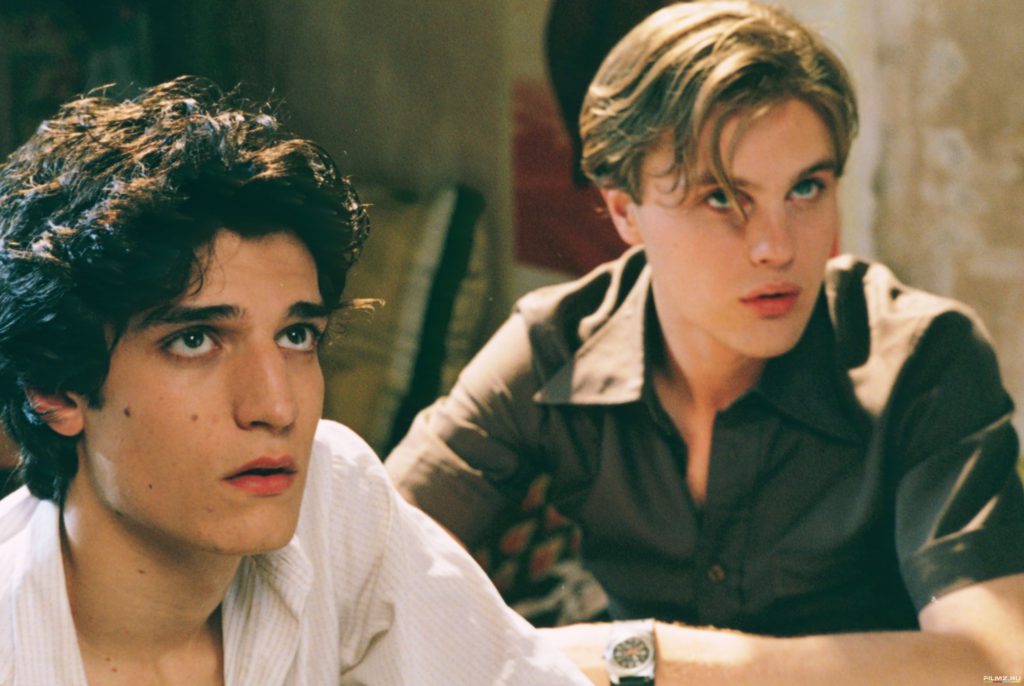Story Y MY
Photos INTERNET
From Paris to Hanoi, cities have often played a key role in films, reflecting change and continuity while offering unexpected paths forward.

The city for wanderers
Bernardo Bertolucci set his latest film, The Dreamers (2023), against the backdrop of the Paris student riots in May 1968. The legendary director sketches the mesmerizing cultural and social atmosphere of Paris at that time as his main characters wander amidst the intense cityscape of a rebellious era.
They are Parisian citizens, enamored with Hollywood. Meeting at the Cinémathèque – the Film Archive Center in Paris – they entertain themselves by reenacting classic scenes from movies like Scarface (1932) and Der Blaue Engel (The Blue Angel, 1930). Paris during the riots is romantically idealized by Bertolucci, reflecting a nostalgic yearning tinged with eroticism, elevating the conflict between the present and the past.
American director Richard Linklater also captured an obsession and romantic adulation of the Parisian style with Before Sunset (2004). Part of a trilogy, Before Sunset follows Jesse (Ethan Hawke) and Céline (Julie Delpy) as they reunite after nine years in Paris at the famous Shakespeare and Company bookstore. Following the footsteps of countless wanderers, they pass by Le Pure Café and ride the Bateaux Mouches to admire the wistful sweeping views of the River Seine. Against the ambiance of their conversations, Paris becomes a backdrop infused with romantic inspiration. This leads to Jesse missing his flight back to the U.S., lingering to hear Céline sing A Waltz for a Night.
Over the course of the trilogy, Jesse and Céline fell in love in Vienna, wandered in Paris, and discovered the realities of marriage in Messina. By focusing almost solely on the dialogue and steps of its leading couple, this series creates a distinct atmosphere. From an outsider’s perspective, European cities, brimming with cinematic frames, become beautiful backdrops covering interesting stories, evoking memories and inspiration for dreamy wanderers, travel enthusiasts, and those seeking history and culture. What would Europe be without endless conversations about art and beauty?

Chaos and colors of the city
The art cinema scene in Asia during the 1990s, meanwhile, reflected the chaos and disorientation in an era of urbanization. In the films of Tsai Ming-liang, one can behold the vistas of Taipei and peer closely into the lives of its lost souls. Rebels of the Neon God (1992) is one such film. In his debut feature, Tsai unfolds a distinctive setting reflecting the decay of crowded cities: dilapidated lodgings, arcades, a damp subtropical atmosphere. The constrained lives of the young characters in the film are profoundly influenced by their living environment.
The urban sensibility in Tsai’s films carries a tone of isolation, draped in a nostalgic red-and- blue color scheme and rich but romantically pessimistic passion. In real life, the director once also shared, “By moving to a new city, I can feel more at ease and discover a new self that I never knew before.”
Continuing the urban inspiration in independent cinema, director Nguyen Hoang Diep also offers a unique perspective filled with introspection. Flapping in the Middle of Nowhere (2014) was shot in Hanoi, primarily set in the modest home of the character Huyen, located right beside the railway tracks. We witness the romantic and financial complications of Huyen’s life as she struggles to move forward. “This film exists based on the hesitation of a pregnant and lonely young woman,” director Hoang Diep said. The interwoven lives in the film create a Hanoi that is not just ancient but also rich in emotional nuance.
These tales of Taipei and Hanoi, representing lost souls, do not embody the spirit of Asian cities in their entirety. Amidst the dizzying development of urban spaces, where values are measured in numbers, it is natural that people would feel a disruption and shaking of their personal values. One resolution to these quandaries unexpectedly arrives in the film The Guava House (2000) by director Dang Nhat Minh. The emotional journey of Hoa, from cherishing memories to indifference towards the guava cluster in her old house, echoes Hanoian sentiments and resonates universally. Director Dang Nhat Minh uses guava imagery to evoke memories and refined dignity of the genteel Hanoians, reenacting the flavor and hue of the ripe fruit. In a world constantly spinning on an axis of change, Hoa’s innocence and simplicity become a rare and luxurious thing. The Guava House is a reminder of human dignity, a value that is never outdated.










